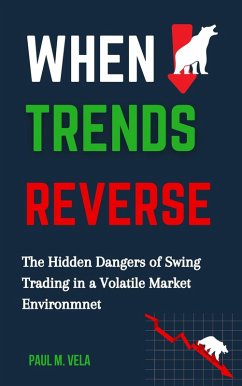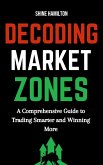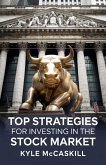Paul M. Vela examines the volatile dynamics that can catch even the most experienced traders off guard. He uncovers the fragile balance between strategy and speculation, where one misstep can lead to devastating consequences. By analyzing real-world case studies, this book reveals how sudden reversals in market sentiment, fueled by unexpected economic events, shifting geopolitical climates, or even algorithmic trading behaviors, can create an environment where traditional swing trading strategies falter.
One of the central themes of the book is the overconfidence trap. Vela illustrates how traders often fall victim to the false security of previous successes, assuming that what worked before will continue to yield results. This assumption becomes especially dangerous in volatile markets, where patterns can change in the blink of an eye. By deconstructing this mindset, Vela encourages readers to adopt a more disciplined, flexible approach to trading that prioritizes adaptability over rigid adherence to past methods.
Another key focus is the danger of misinterpreting market signals. Vela explores how in volatile environments, false breakouts, exaggerated price movements, and conflicting indicators can lead traders to make costly decisions. He emphasizes the importance of understanding the broader context of these signals rather than reacting impulsively to short-term fluctuations. This section of the book offers practical insights into how traders can refine their analytical skills and develop a more nuanced understanding of market behavior.
The book also delves into the psychological toll of swing trading in uncertain markets. Vela paints a vivid picture of the stress, fear, and emotional fatigue that traders often face when markets defy expectations. He examines how these emotions can cloud judgment, leading to impulsive decisions and, ultimately, significant losses. By addressing the human side of trading, When Trends Reverse provides readers with strategies to maintain mental clarity and resilience, even in the most challenging trading environments.
Risk management is another cornerstone of the book. Vela emphasizes that in volatile markets, the need for a robust risk management plan becomes even more critical. He outlines practical techniques for setting stop-loss levels, managing position sizes, and diversifying portfolios to minimize exposure to sudden market swings. These strategies are presented in a straightforward manner, making them accessible to both novice and seasoned traders.
Vela also critiques the reliance on overly simplistic trading systems and automated tools that promise to predict market trends with precision. He argues that in a volatile environment, no algorithm or system can account for the complexities of human behavior and external market forces. Instead, he advocates for a more hands-on approach, where traders take the time to develop their intuition and gain a deeper understanding of market mechanics.
Finally, When Trends Reverse challenges readers to rethink their definition of success in swing trading. Vela highlights how the pursuit of consistent, incremental gains often proves more sustainable than chasing high-risk, high-reward opportunities. By shifting the focus from short-term wins to long-term growth, traders can build a more resilient, adaptable approach to navigating volatile markets.
Dieser Download kann aus rechtlichen Gründen nur mit Rechnungsadresse in A, B, CY, CZ, D, DK, EW, E, FIN, F, GR, H, IRL, I, LT, L, LR, M, NL, PL, P, R, S, SLO, SK ausgeliefert werden.









